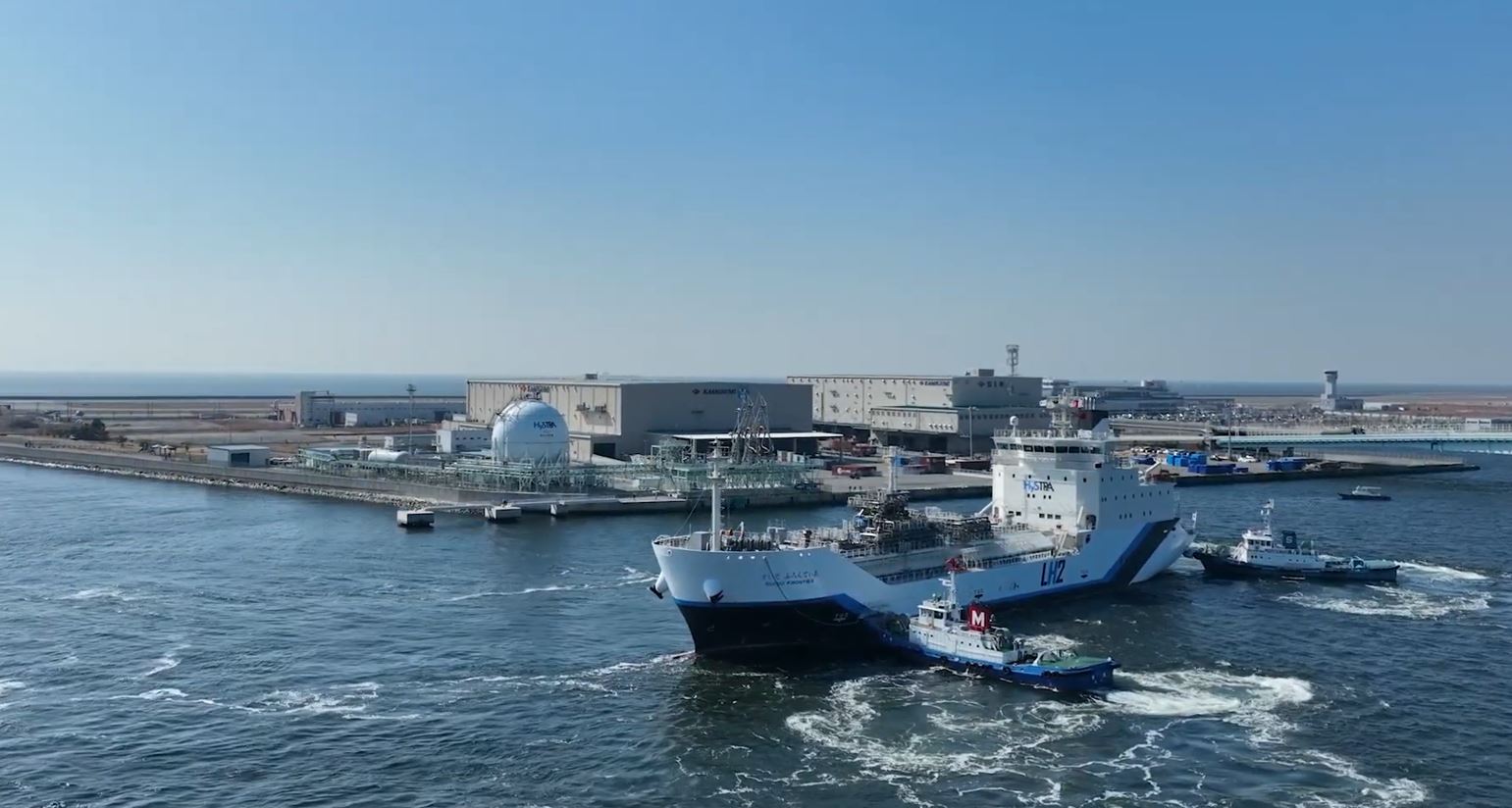Kawasaki Heavy Industries said the world’s first liquefied hydrogen carrier, Suiso Frontier, has returned to Japan after loading its first cargo in Australia.
According to a statement on Friday, the vessel, built by KHI, returned to “Hy touch Kobe”, managed and operated by Iwatani, in Japan with a cargo of liquefied hydrogen generated from Victorian coal.
KHI said this marks the world’s first completion of maritime transportation of liquefied hydrogen over long distances.
In December, KHI said the round-trip between Japan and Australia would demonstrate that liquefied hydrogen could be produced in Australia and transported back to Japan by ship, in a similar way to liquefied natural gas. The vessel arrived at Victoria’s Port of Hastings last month.
The Hydrogen Energy Supply-chain Technology Research Association or HySTRA runs the marine liquefied hydrogen transport over more than 9,000 km as part of the pilot project.
KHI is part of HySTRA along Shell/Stasco that manages and operates the vessel while J-Power produces hydrogen from brown coal in Australia. Besides Kobe terminal operator Iwatani, other partners include Marubeni, Eneos, and K Line.
Hydrogen Energy Supply Chain (HESC), the Japanese-Australian venture that produces hydrogen from brown coal, also includes KHI, J-Power, Iwatani, Marubeni, as well as AGL Energy, and Sumitomo.
Testing to continue
HySTRA said in a separate statement it would continue to “carry out loading/unloading test and verification of acquired data, and continue the pilot demonstration project for establishing hydrogen energy supply chains.”
Last year, Japan’s classification society ClassNK registered the 116 meters long Suiso Frontier and it became the world’s first ship to be officially classified as a liquefied hydrogen carrier.
Weighing about 8,000 tonnes, Suiso Frontier features a 1,250-cbm capacity storage tank.
The partners plan to produce about 225,000 tonnes of liquefied hydrogen (LH2) per year and deliver the fuel to Japan.

